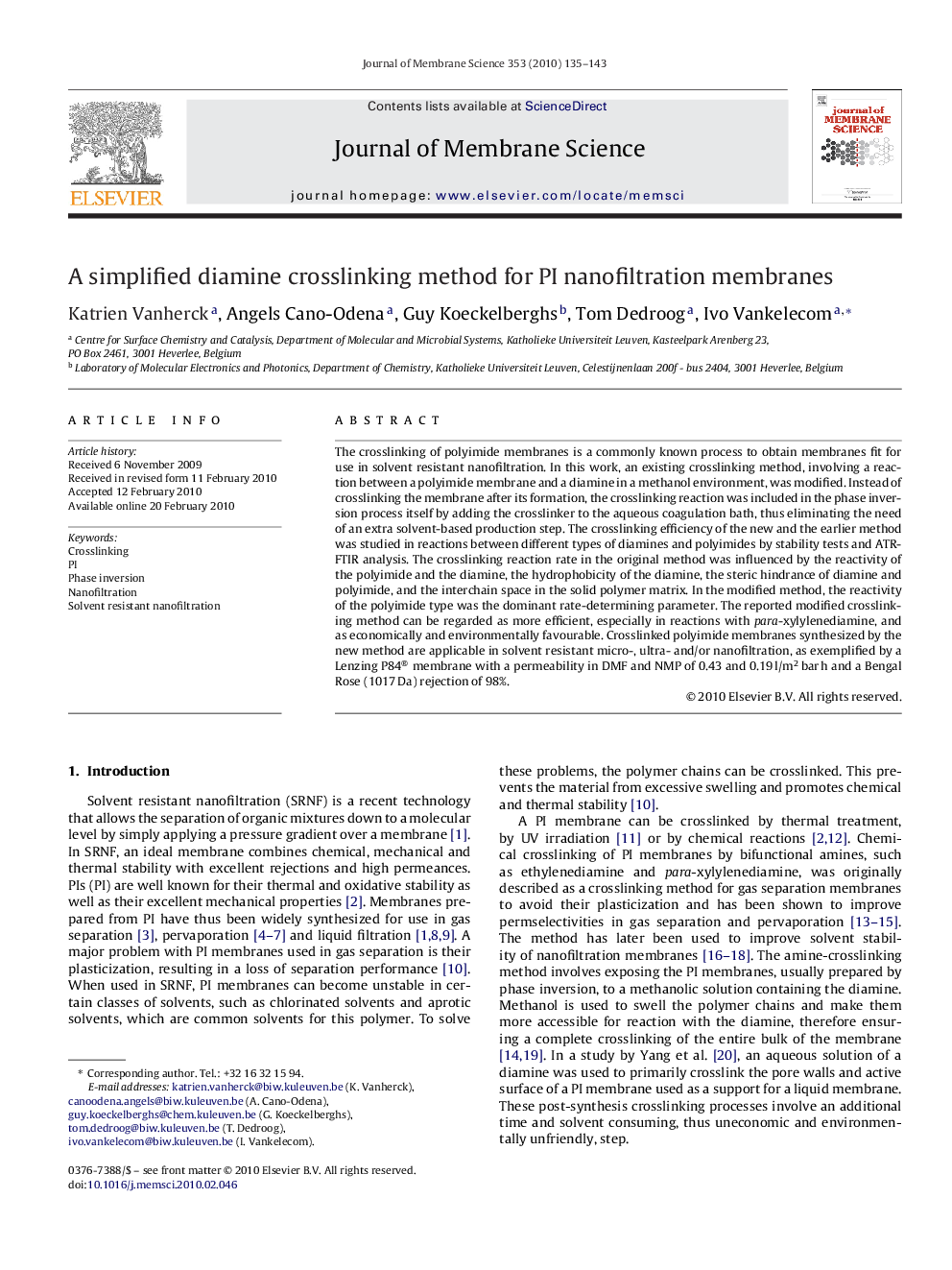| Article ID | Journal | Published Year | Pages | File Type |
|---|---|---|---|---|
| 636467 | Journal of Membrane Science | 2010 | 9 Pages |
The crosslinking of polyimide membranes is a commonly known process to obtain membranes fit for use in solvent resistant nanofiltration. In this work, an existing crosslinking method, involving a reaction between a polyimide membrane and a diamine in a methanol environment, was modified. Instead of crosslinking the membrane after its formation, the crosslinking reaction was included in the phase inversion process itself by adding the crosslinker to the aqueous coagulation bath, thus eliminating the need of an extra solvent-based production step. The crosslinking efficiency of the new and the earlier method was studied in reactions between different types of diamines and polyimides by stability tests and ATR-FTIR analysis. The crosslinking reaction rate in the original method was influenced by the reactivity of the polyimide and the diamine, the hydrophobicity of the diamine, the steric hindrance of diamine and polyimide, and the interchain space in the solid polymer matrix. In the modified method, the reactivity of the polyimide type was the dominant rate-determining parameter. The reported modified crosslinking method can be regarded as more efficient, especially in reactions with para-xylylenediamine, and as economically and environmentally favourable. Crosslinked polyimide membranes synthesized by the new method are applicable in solvent resistant micro-, ultra- and/or nanofiltration, as exemplified by a Lenzing P84® membrane with a permeability in DMF and NMP of 0.43 and 0.19 l/m2 bar h and a Bengal Rose (1017 Da) rejection of 98%.
